Key Takeaways:
- Understanding the implications of crating a cat for long periods while at work.
- Exploring alternative solutions to keep your cat safe and entertained.
- Learning about the importance of environmental enrichment for your cat's well-being.
Many pet parents grapple with the question: "Can I keep my cat in a crate while I'm at work?" It's a concern that arises out of the need to ensure the safety and well-being of their feline friends.
This article aims to provide comprehensive insights into the practice of crating cats, its potential effects, and alternative strategies to keep your cat happy and healthy while you're away.
Is Crating Your Cat a Good Idea?
When considering whether to crate your cat during work hours, it's essential to understand the nature of felines. Cats are curious, independent animals that enjoy exploring and having the freedom to move around.
Keeping your cat in such a small space for extended periods can lead to frustration and stress. While dogs may adapt better to crating due to their denning instincts, cats typically do not share this trait.
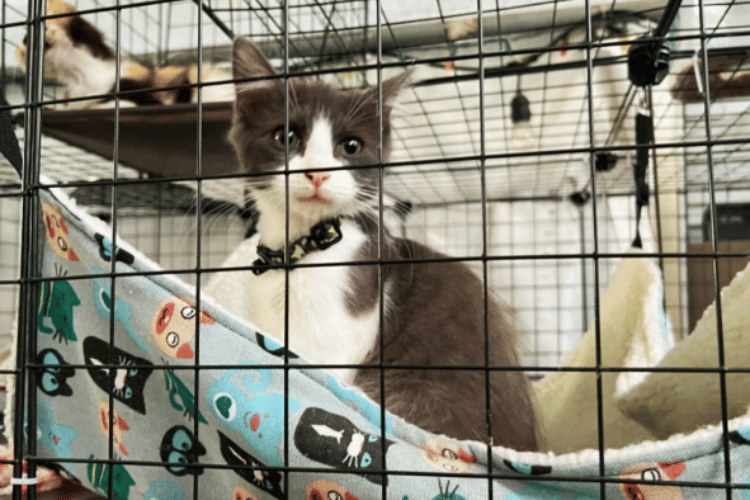
The Size and Setup of the Crate
If you're contemplating using a crate, opting for a large crate is crucial. It should be spacious enough to accommodate a small litterbox, food and water dishes, and some toys. However, even with a large crate, spending time confined can make a cat feel trapped, leading to potential behavioral and health issues.
Understanding Your Cat's Needs
Cats have a strong need for mental and physical stimulation. When left in a crate, they're deprived of the opportunity to engage in natural behaviors like scratching, climbing, and jumping.
This lack of activity can result in boredom and anxiety. Providing a cat tree and scratching posts around the house can help meet these needs when you're not home.
The Role of Environmental Enrichment
Environmental enrichment is vital for your cat's well-being. This involves creating a stimulating environment that caters to their instinctual behaviors. Instead of confining your cat to one room or a crate, consider setting up various play areas with cat toys and interactive elements to keep them entertained.
Alternatives to Crating
There are other solutions to ensure your cat's safety while you're at work. Baby gates or pet-proofing a small room can offer a safe place for your kitty without the restrictions of a cage. This allows your cat to roam, play, and rest comfortably without getting into trouble.
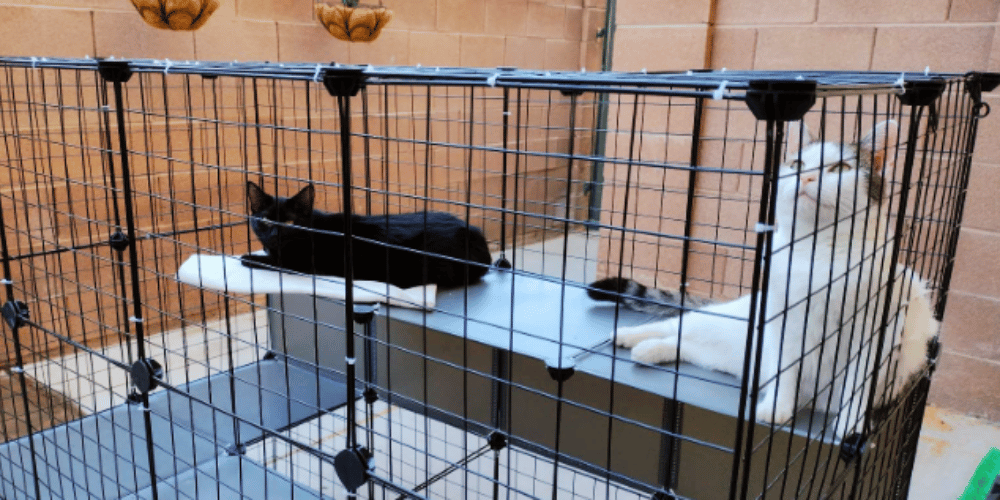
Litter Box Training and Management
Proper litter box training is essential for any indoor cat. A cat confined to a crate for long periods may struggle with limited access to a litter tray. Ensuring your cat has free access to a clean litter box is crucial for their hygiene and comfort.
Integrating a New Kitten with Your First Cat
When considering "can I keep my cat in a crate while I'm at work," it's essential to think about the dynamics if you're introducing a new kitten to your first cat. Kittens are bundles of energy and can often benefit from the company of an older cat.
However, it's crucial to ensure that your first cat doesn't feel threatened by the newcomer. Gradual introduction is key, starting with scent swapping and short, supervised interactions. This can prevent aggressive behavior and help both kitties feel comfortable with each other.
On the other side of the coin, your first cat might be a mother cat or a male cat with a strong territorial instinct. In such cases, crating the new kitten while you're not home can provide a safe space for both animals. It's important to provide the kitten with a crate large enough to hold a comfy bed, a litter box, and some toys.
Over time, as they become accustomed to each other's presence, you can increase their time together until they're comfortable enough to coexist peacefully without supervision.
The Impact of Crating on Cat Socialization
When considering the question, "Can I keep my cat in a crate while I'm at work?", it's important to think about the social needs of your feline friend. Cats, much like humans and other animals, require social interaction to remain mentally stimulated and emotionally balanced.
While they are often seen as solitary creatures, many cats enjoy the company of their humans, other cats, or even a dog companion. Crating a cat for long periods can deprive them of these interactions, potentially leading to feelings of isolation and stress.
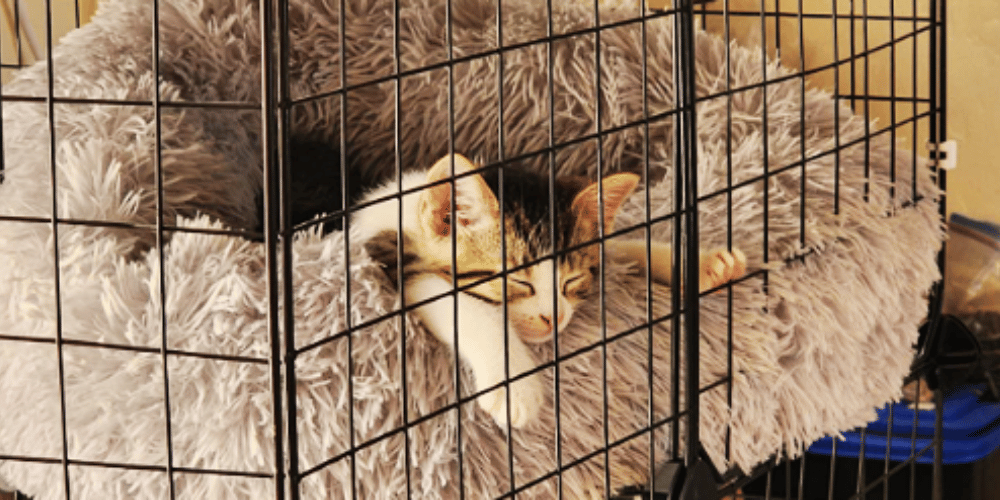
In multi-pet households, crating can hinder the development of important social bonds. Cats learn to coexist and communicate with each other through shared space and experiences. By putting your cat in a crate, you might unintentionally limit their ability to socialize with other cats or animals in the home.
This could lead to difficulties in integrating new pets in the future or cause tension between existing pets. It's crucial to find a balance that allows for both safety and socialization.
The Importance of Routine for Crated Cats
When considering the question, "Can I keep my cat in a crate while I'm at work?", it's essential to establish a consistent routine. Cats are creatures of habit, and a predictable schedule can help them adapt to crated life.
Start by setting specific times for your cat to be in the crate and ensure that it coincides with quieter periods of the day when there's less activity in the house. This could mean crating them after the kids have gone to school or when there's no one home to watch over them. A routine helps your cat understand that the crate isn't a punishment but a part of their daily cycle.
Moreover, routines extend beyond just crating. It's about creating a structured day that includes playtime, feeding, and interaction with you. Before you leave for work, spend some quality time with your feline friend. Engage in activities they enjoy, such as playing with a favorite toy or cuddling.
This not only strengthens your bond but also expends their energy, making them more inclined to rest while you're away. When they associate the crate with the calm after playtime, it becomes a more welcoming space.
Training Your Cat for Positive Crate Experiences
Training your cat to view the crate positively is another crucial aspect to consider. The crate should never be used as a form of punishment; instead, it should be a safe haven where your cat feels secure and comfortable.
Begin by placing treats or their favorite toys inside the crate to encourage exploration. The door should remain open initially, allowing your cat to enter and exit at will. This helps them understand that the crate is their space, not a trap. Over time, as they become more accustomed to the crate, you can start closing the door for short periods while you're home, gradually increasing the time as they get more comfortable.
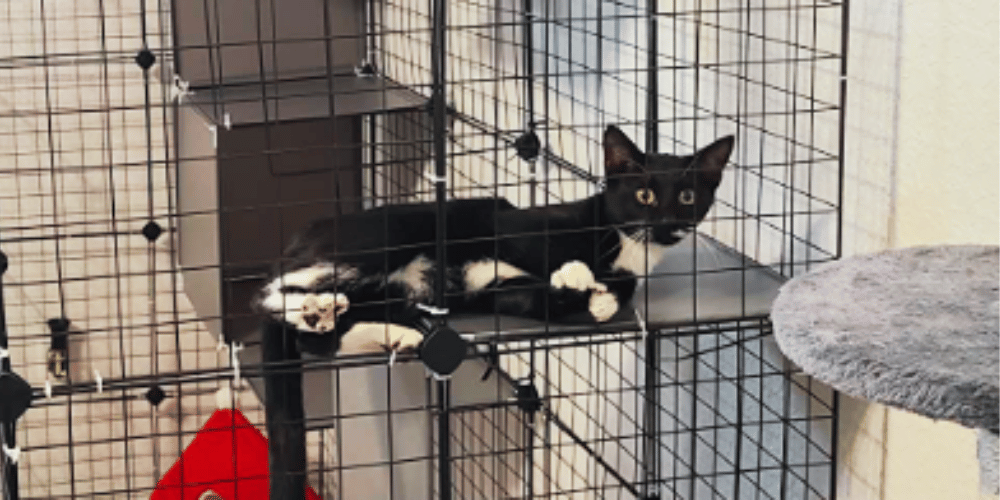
In addition to treats and toys, consider feeding your cat their meals inside the crate. This can help them associate the crate with positive experiences, such as enjoying a delicious meal. Remember, the goal is to train your cat to see the crate as a cozy spot where good things happen, not just a place they're confined to when you're not around.
With patience and positive reinforcement, your cat can learn to appreciate their crate as a personal retreat, making the times you're at work less stressful for both of you.
Enrichment Alternatives to Crating
If you're hesitant about leaving your cat unattended but are concerned about the implications of crating, consider enrichment alternatives that can keep your cat engaged while you're away. A simple cardboard box can become a source of endless entertainment for a curious cat.
Leave a few boxes in safe areas around your home, each with different-sized holes or filled with toys, to stimulate your cat's natural hunting instincts and provide a fun challenge.
Another option is to create a dedicated safe room, such as a spare bathroom, where your cat can roam freely without the confines of a crate. Ensure the room is cat-proofed, removing any hazardous items and securing cabinets and doors. You can also set up a cat tree, scratching posts, and interactive toys to keep your cat occupied.
This setup not only gives your cat more freedom but also helps in training them to have their own space where they can relax, play, and watch the world go by without feeling isolated.
Creating a Safe Outdoor Experience for Your Cat
For those wondering about keeping a cat outdoors while they're at work, there are several considerations to keep in mind. If your cat enjoys the outdoors and you're looking for alternatives to crating, creating a secure outdoor enclosure could be a solution.
This allows your cat to experience the sights, sounds, and smells of the outside world without the risks associated with free-roaming. Ensure the enclosure is escape-proof and provides shelter from the elements, as well as access to water.
However, not all cats are suited for outdoor life. Young kittens, for example, are often too vulnerable to be left outside unsupervised. Similarly, if you live in an area with a high traffic volume or predatory wildlife, it's safer to keep your cat indoors.
If you do decide to let your cat spend time outside, consider a harness and leash training, or consult with your local humane society or a rescue group for advice on how to do this safely. Always prioritize your cat's safety and well-being, whether they're enjoying the great outdoors or lounging inside.
Social Considerations for Your Cat
Cats, especially kittens or a new cat you bring home, may require more social interaction than what a crate can provide. While some cats may tolerate being alone for hours, others may become lonely and stressed. It's important to consider the social needs of your cat before deciding to crate them.
Health and Behavior Implications
Crating a cat for the duration of a workday can lead to health issues due to inactivity and stress. Cats need to move around to maintain their physical health, and being confined can result in weight gain and other health problems. Behavioral issues can also arise from the frustration of being caged.
When Crating Might Be Necessary
There are circumstances where crating might be a last resort, such as when a cat is recovering from surgery or needs to be isolated for health reasons. In these cases, it's important to follow your vet's advice and ensure the crate is as comfortable as possible.
Preparing for a New Cat
When you first bring home a new cat, you might need to confine them to one room or a large crate temporarily. This helps them adjust to their new home and keeps them safe while they get accustomed to their surroundings. However, this should only be a temporary measure.
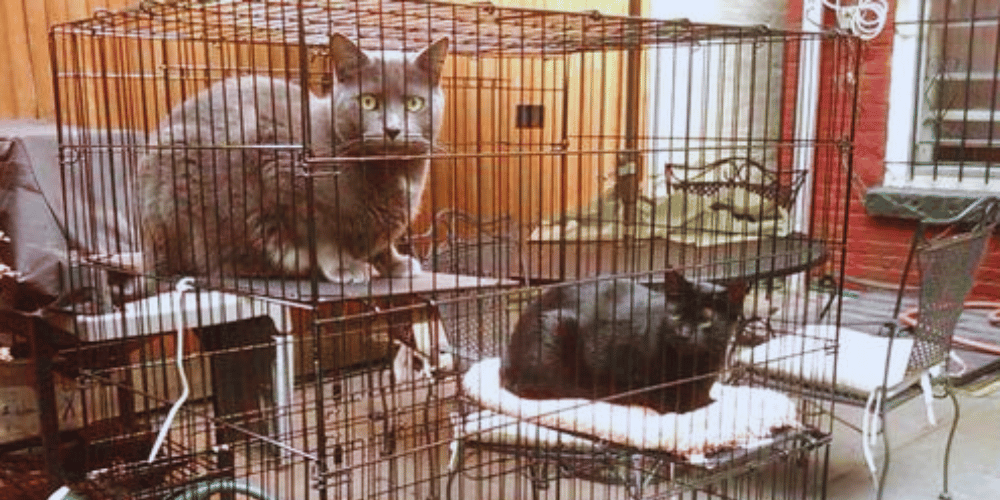
Nighttime Crating
Some cat owners consider crating their pets at night. While this might prevent nocturnal activities that disturb your sleep, it's important to ensure that your cat has had enough activity during the day and that the crate is comfortable for sleeping.
The Verdict on Crating Cats
Ultimately, crating a cat for the entire workday is not recommended. Cats are not naturally inclined to be confined and doing so can have negative effects on their well-being. It's better to look for other ways to keep your cat safe and engaged while you're away.
Tips for Keeping Your Cat Happy Without Crating
Creating a cat-friendly environment with plenty of stimulation is key. Ensure your cat has access to various toys, scratching posts, and comfortable resting areas. Consider using automatic feeders and water fountains to maintain their feeding schedule and keep them hydrated.
Conclusion
Crating your cat while you're at work should be a last resort and not a regular practice. It's essential to consider the physical and emotional needs of your cat and provide an environment that allows them to thrive even in your absence.
FAQ Section
Is it cruel to crate a cat while I'm at work?
Keeping a cat in a crate for an entire workday can be considered cruel as it restricts their movement and can lead to stress and health issues. It's important to find alternative solutions that cater to your cat's needs for space and stimulation.
What are some alternatives to crating my cat while I'm at work?
Alternatives include pet-proofing a room or using baby gates to create a safe space, providing plenty of toys and interactive elements for stimulation, and ensuring they have access to a clean litter box and fresh water.
How long can I leave my cat in a crate?
Crating should only be done for short periods, such as during transportation or when necessary for health reasons. It's not advisable to crate a cat for the length of a workday regularly.
Thank you for visiting LegitLists we hope this helps you make a legitimate choice!






